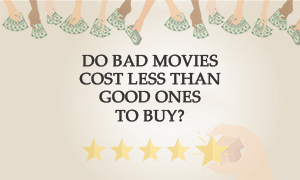
There are very few products in the world where quality does not affect the price. And yet, when you go to the cinema, the ticket price is unconnected to the quality of the movie you’re about to see.
Cinema ticket prices are dictated by:
- Cinema facilities – Nicer sites will charge more, as will sites with IMAX or 4D offerings.
- Who you are – Discounts are given to the young, the old and
the lazystudents. - Time – Movies are cheaper during the week and outside of peak hours.
- “Blockbuster tax” – Some sites charge slightly more for bigger movies, such as Odeon in the UK.
This can create a myriad of prices (more on that here) but I don’t know of any cinema site which takes into account how good the movie you’re going to see is. This suggests cinemas don’t take quality into consideration for their pricing strategies.
But home entertainment retailers can. By the time they reach digital sales platforms there is likely to be a consensus of a movie’s quality. Plus, audiences are largely platform-agnostic as the end result will be the same (i.e. it plays on the same TV whomever you buy it from).
So we’re left asking – on digital platforms, do bad movies cost less than good ones?
I studied the purchase price of a digital standalone HD copy of 29,461 movies across six platforms in the US. All movies were theatrically released between 2000 and 2019.
Do bad movies cost less than good ones?
I started by looking at prices for movies on Apple TV (née iTunes). I used the IMDb audience score to assign each film into one of five equal sized buckets, from the lowest rated 20% to the highest rated 20%.
The average price for the ‘worst’ movies was $10.96, whereas the ‘best’ movies cost an average of 12.64 – 15% more.
The chart below splits the data out by when the movie was first in cinemas, and reveals that the worst movies almost always have a lower average price than the best.
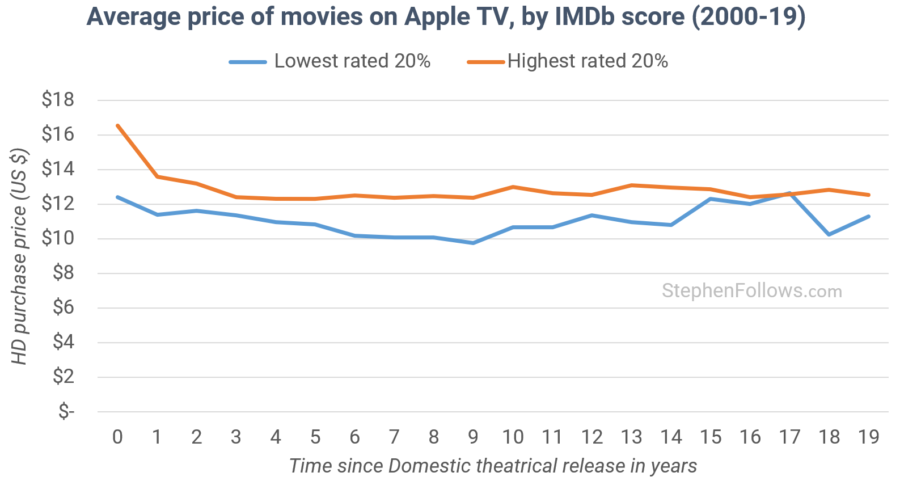
As a quick aside, the eagle-eyed among you may be wondering about the spike in the average price of bad movies in 2002 on Apple TV. In that year, the worst 20% of movies cost an average of $12.62 whereas the top 20% of movies only reached an average of $12.56. This is the only year in which the worst films cost more than the best, albeit by a tiny margin.
“What would cause this counter-intuitive effect?” you may be asking. Well, it might be better to ask “Who would cause this counter-intuitive effect?”
It’s a result of three very bad, very expensive Disney movies – Cinderella II: Dreams Come True, The Hunchback of Notre Dame II, and Snow Dogs. Disney has a long history of pricing strategies which result in the public frequently paying higher prices than for movies from other studios, and families are an audience segment with a relatively low interest in quality (being more concerned about the movie’s level of objectionable content and whether it appeals to the loudest family members).
Is this true for other platforms?
Let’s get back to our main question. I widened the study to look at five additional digital platforms and added a second measure of quality, namely what film critics thought of the movie. I used the Pearson coefficient to measure correlation, in which zero means no correlation and one means perfectly positively correlated (i.e. as one measure goes up, so too does the other).
I found that the views of film critics and film audiences are both positively correlated with the digital price, albeit to varying degrees. Film critics (as measured via the Metascore) had a fairly weak correlation, whereas film audiences (as measured by IMDb rating) had a stronger connection.
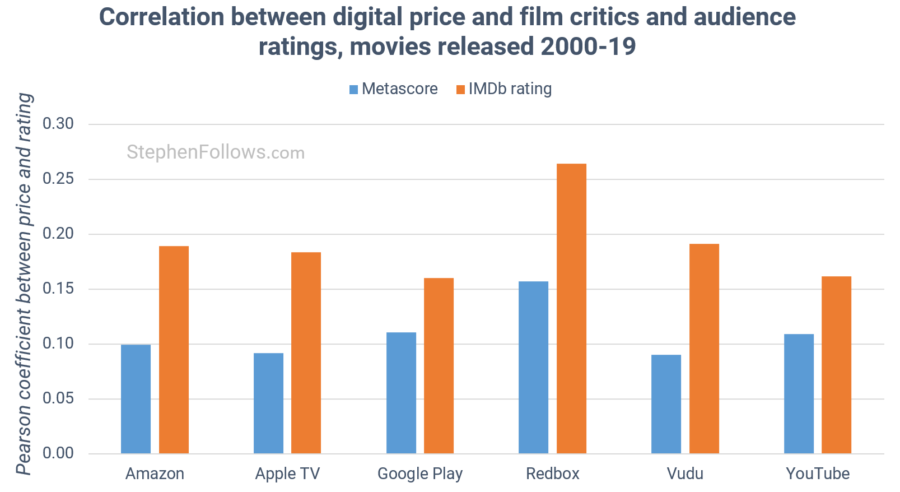
Does it matter how old the film is?
I wasn’t satisfied with this chart being the final word on the topic as it compressed two decades worth of movies into one number. So I dug keeper, looking at how the connection changed over time.
I found that in the first few years a movie is on sale its price has nothing to do with its quality. As movies age, their quality becomes increasingly important, until a decade after their initial theatrical run, when the effect of quality levels out.
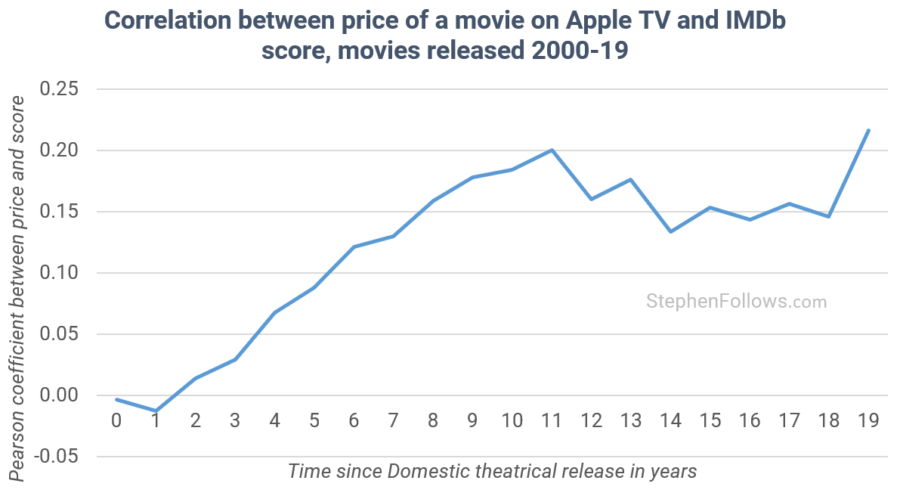
The result is broadly the same for all six platforms I studied.
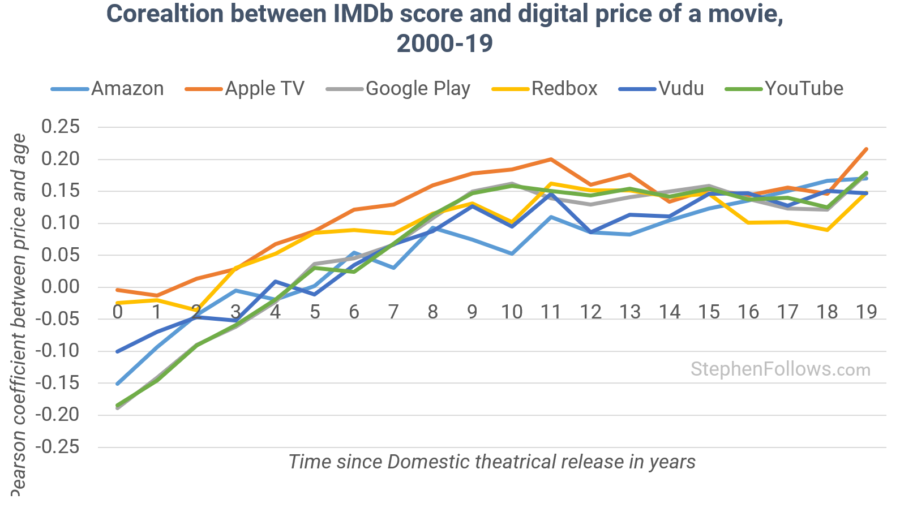
Strangely, YouTube and the Google Play Store seem to charge less for better movies in the first few years of release, although after a decade or so they move into line with other platforms.
Next week I will look at other factors which affect a movie’s digital price, including the film’s budget and theatrical performance.
Notes
This research refers to the price to digitally buy a standalone HD copy of a movie on a number of digital platforms. This excludes SD and 4K versions, special editions, box sets or bundles. It relates to the US market and all prices are in US dollars.
The data came from the platforms directly and via third-party listing sites such as Just Watch and Blu-ray.com. I gathered the raw data at the end of 2019 and so it is unaffected by the current pandemic and its resulting home entertainment boom.
Epilogue
This reminds me of an experience I had a while ago when I took an American friend to a British pub for lunch. We ordered our food at the bar and the friend asked why we had to pay when ordering, rather than after the meal as one would in a restaurant. The only honest answer I could give him was “You’ll see”.
The incident stayed with me as it highlighted that there are some services / products you pay for in advance and some you pay for afterwards. Anecdotally, I’ve noticed that there’s a link between how confident the establishment is that you’re likely to enjoy the experience and how early in the process they require you to pay.
Movies are an interesting case study as they’re sold on both sides of this knowledge gap. In cinemas, the quality is largely unknown (assuming it’s in the opening weeks) whereas when the public come to purchase a copy there is likely to be a widely-known consensus (both by critics and word-of-mouth).
Maybe this goes some way to explaining why the correlations we saw above exist.

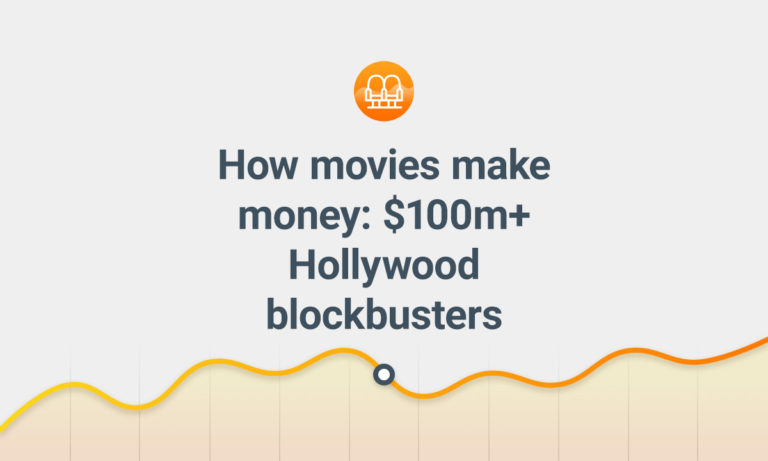
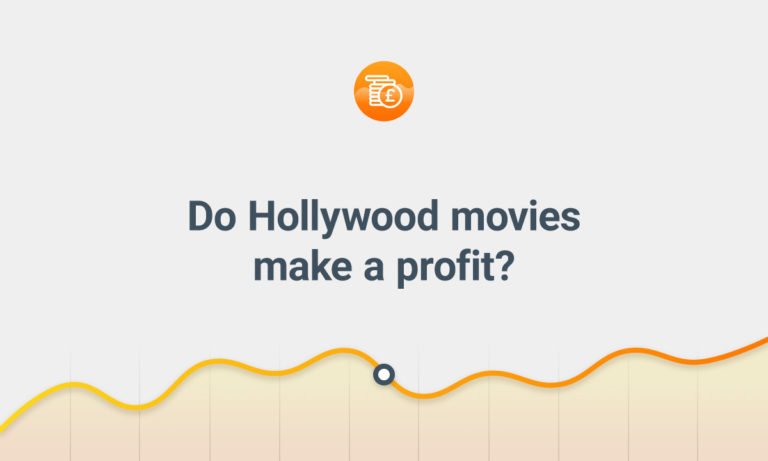
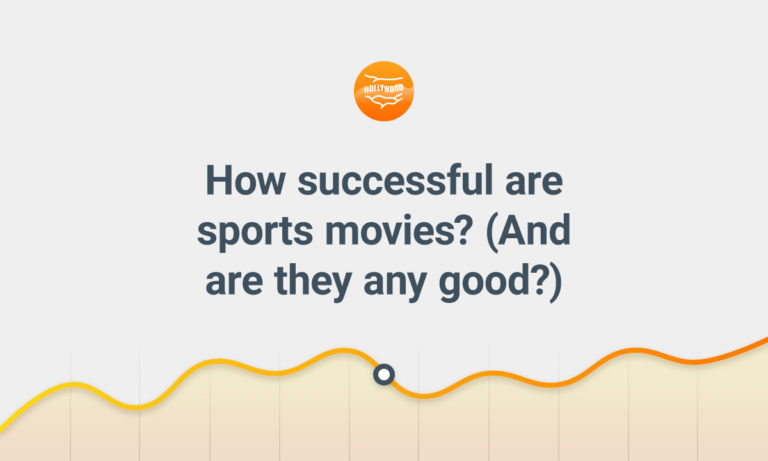

Comments
Stephen…
I don’t know what possessed you to become this type of statistician, but your work is sheer genius, and invaluable to movie lover/movie pundits like myself. I regularly write film reviews and I’m releasing a book entitled: Movies: Why We Love ‘Em…and How They Change Us. Keep doing what you’re doing. There are interested readers out there. And don’t be surprised if you find yourself quoted or referenced in a book someday (if you haven’t already).
Hi Stephen,
I found this really interesting – albeit I’m still playing catch up with my SF reading. Fantastic insights and a lot to think about as a writer and potential content provider. Earlier today, I was watching a Christopher Volger video about ‘what is a scene?’ which (these days) he defines as some type of ‘transaction’ between characters. However, the part I found most useful was the question as to the transaction between viewer (giving up 2 hours to watch a film) and what the writer rewards them with for that sacrifice – compelling story? emotional resolution? fantastical scenes? memorable dialogue? comedic moments? escapism? et al. I found it a salient question and one that if taken seriously should affect the differential between films that demand a high price and those that are less deserving?